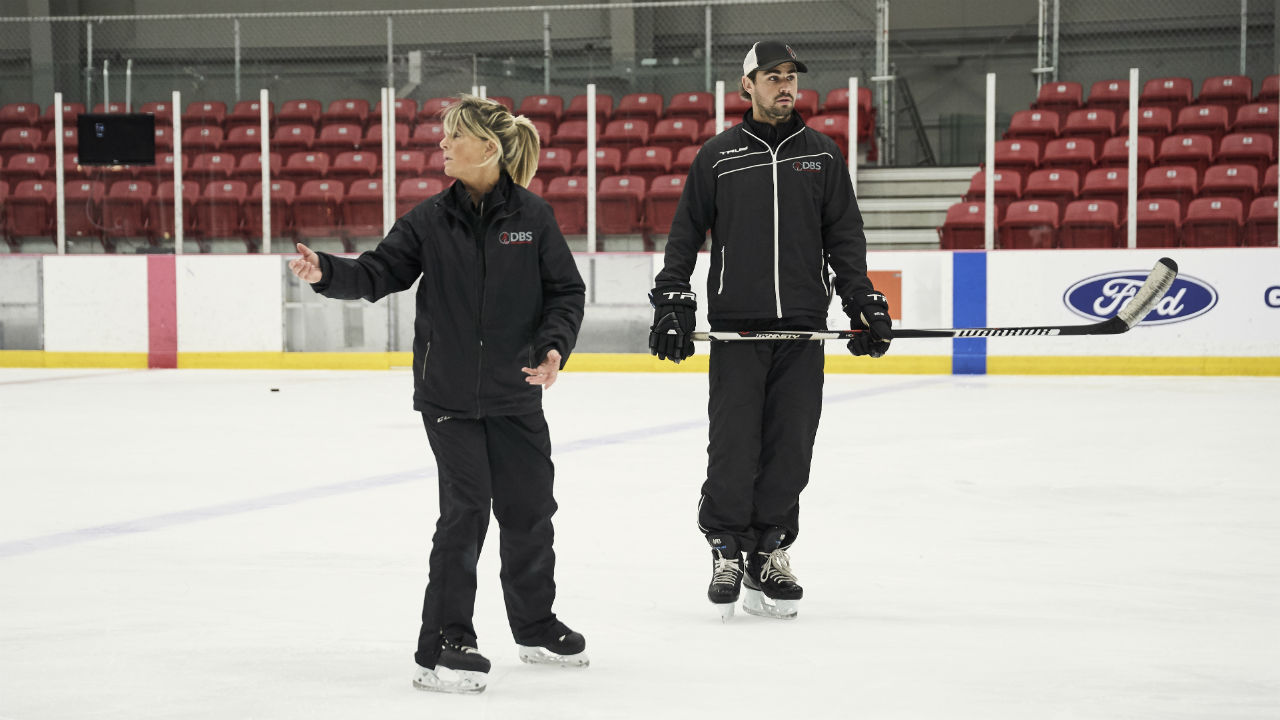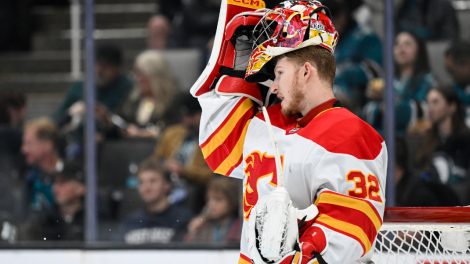Dawn Braid has trained some of the most dominant names in the game over her decades on the ice as one of the sport’s premier skating coaches. League MVPs. Captains. Burgeoning young phenoms. But the name that graced the back of the jersey of perhaps Braid’s biggest success story isn’t ‘Tavares’ or ‘Hall’ or ‘Tkachuk’ — it’s the same as her own.
Mackenzie Braid’s earliest days at the rink were a bit different from most prospects’. Though, that’s to be expected when your mom’s a national-level figure skater turned elite hockey skating coach. Long before he was following in her footsteps in the skating-coaching world, the OHL, CIS and ECHL alum was honing his skill-set under Dawn’s watchful eye.
A unique experience, no doubt.
“I mean, as a player, having your mom involved in hockey obviously makes it tough,” Mackenzie says with a chuckle from the main concourse of the Ford Performance Centre, he and Dawn a few minutes removed from an on-ice session. “Because a lot of moms were just like, ‘Oh, you did great out there.’ Where she was a little more critical.”
But the stakes were always going to be different for Dawn’s own sons, Mackenzie and Taylor. After years dedicated to building up her own on-ice ability as a young figure skater in the Vaughan, Ont., area — the site of this weekend’s Rogers Hometown Hockey festivities — and plenty more focused on teaching hockey players how to better move through the game, her sons’ progress carried weight.
“I might’ve been harder on [Mackenzie] when he was younger, when I was teaching, because if I was teaching skating it was important that he was a good skater,” Dawn says.
[snippet id=3653171]
There’s no question the early pressure paid off for Mackenzie. The 26-year-old’s forte on the ice back in his days manning blue lines was always his skating, says Dawn. But watching his mother work from a young age — taking part in the sessions in which she would teach a number of local, young skaters — granted Mackenzie something more.
“Even when I was a student, I was always looking at people in an instructor’s way,” Mackenzie says. “I can remember way back, I was probably 14, I’d be in the session and I’d kind of go over to a guy that I was buddies with, and I’d say, ‘You know, you’re supposed to do it this way.’ And that’s kind of how I started to see it, to see how she saw everyone else, and started correcting people.
“And eventually I was an actual instructor on the session, where I was more of a demo. And then it just kind of grew from there. I think I’ve been on the ice in a tracksuit since I was like 13 or 14 years old.”
Nearly a decade on from those early days on the other side of the whistle, Mackenzie’s moved into a role as Dawn’s co-instructor. A near lifetime of focusing on every aspect of his mom’s training philosophy — one grounded in correcting body alignment and building technique atop that perfected foundation — allowed him to serve as a valuable resource.
Firstly, as a former student who could seamlessly demonstrate her techniques for new clients. But, more importantly, as a hockey-focused perspective on her teachings. Mackenzie’s own experience playing competitively helped perfect his mom’s techniques — his understanding of how players think in each situation on the ice intertwining with her limitless knowledge of how to become as fluid and powerful a skater as possible.
“He’s an exceptional skater,” Dawn says of Mackenzie. “He can add a whole other element when we’re out there, of ‘This is where you’re going to use it in a game.’”
“We feed off each other, but we also sometimes get into it,” Mackenzie says. “She might be thinking too skating-wise — like just strictly skating. I’m thinking, ‘Okay if you’re in this position in a game, it’s not going to work.’”
It’s a give and take, the pair says, and the sum of both perspectives grants players both highly advanced techniques to improve their skating ability, and an understanding of how to best utilize those techniques in game situations.
The value of that combination hasn’t gone unnoticed by the pros Dawn works with on a daily basis.
“Kyle (Okposo) hired me, and I said, ‘Okay, I can work with you on my own, or with Mackenzie,’” Dawn recalls. “‘He can come out and work with me as well and help you, and add that whole in-game situation stuff that I’m not going to offer to you. He’ll be able to make certain corrections with stick position and stuff, which does affect your skating.’ It’s really important. So for me, that added a whole element to my teaching that wasn’t there before.
“He came out to work with Kyle, and Kyle said, ‘I want him out here every session.’”
That’s since become the norm, with other star clients like John Tavares speaking highly of Mackenzie’s role in helping shift skills learned at the practice rink seamlessly to NHL ice.
[relatedlinks]
While the next generation of Braid instruction initially consisted of Mackenzie working alongside his mother and taking on her clients when she’d be out of town for work with the Calgary Flames — her current club — Mackenzie has since spread the family name further throughout the sport, signing on to work with Vancouver Canucks prospects and the OHL’s Hamilton Bulldogs.
To hear him tell it, it’s simply another path on the growing trail that Dawn’s blazed in the game, another extension of her legacy. She already etched her name in NHL history in 2016 as the first woman ever hired to a full-time coaching position in the league. She’s refined the games of a long list of players spanning from big-league elite John Tavares to recent Canadian world juniors hero Akil Thomas.
“It’s incredible what she’s done,” Mackenzie says of his mother. “The players that she’s worked with, the influence on those guys and the respect that they have for her.”
And for young coaches focused specifically on skating, the industry-wide impact of Dawn and others like her has been no less seismic, he says.
“[They] created this new market for someone to come in and create a career for themselves on the other side of the game, where it’s coaching opposed to playing. For someone like myself, without her I wouldn’t be in this field at all.”









